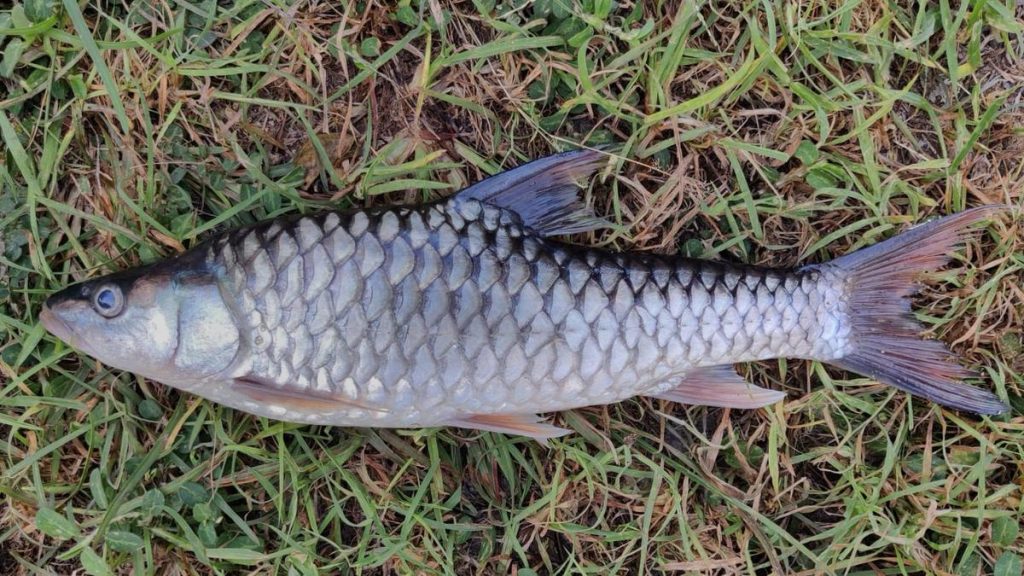
Humpbacked mahseer, a critically endangered megafish that can grow up to weigh 60 kg found in the Westerns Ghats.
The first-ever multi-taxon global freshwater fauna assessment for The IUCN Red List of Threatened Species has identified Western Ghats as a key location with greatest abundance of threatened freshwater species.
The study co-authored by species experts from all geographical regions of the world also revealed that a staggering one-quarter of the freshwater fauna are threatened with extinction.
Employing a rigorous expert consultation process and quantitative criteria while covering 23,496 decapod crustaceans, fishes and odonates, this comprehensive global assessment evaluates the extinction risk and conservation status for diverse freshwater fauna groups.
Mitigation efforts
With approximately one-quarter of freshwater species facing a high extinction risk, and a record of 89 confirmed and 187 suspected extinctions since 1500 AD, the study is a major step towards mitigating further species losses.
The study led by IUCN and published in the multidisciplinary science journal, Nature, underscores the historical underappreciation of freshwater ecosystems in global environmental governance.
Previously often categorised within terrestrial or marine realms, freshwater environments now demand distinct management strategies due to their unique characteristics. While concentrations of threatened species are relatively smaller and spatially dispersed, the study pinpoints Lake Victoria (Kenya, Tanzania, Uganda), Lake Titicaca (Bolivia and Peru), Sri Lanka’s Wet Zone, and the Western Ghats (India) as hotspots of threatened freshwater species richness.
These findings are the culmination of over 20 years of comprehensive assessments involving contributions from more than 1,000 species experts.
Extinction threat
As per experts, Western Ghats harbour over 300 freshwater fish species of which more than one-third face extinction.
“This region also boasts of exceptional evolutionary diversity as it’s likely the only region in Asia with two endemic families of freshwater fishes, which are exclusively found in groundwater and subterranean systems. Presence of iconic Humpbacked mahseer, a critically endangered megafish that can grow up to weigh 60 kg, further exemplifies the region’s unique aquatic life. Among Indian States, Kerala has the highest number of threatened freshwater fishes, with 74 of its 188 fish species for which Red List assessments are available categorized as threatened while Periyar River stands out as a critical conservation priority due to its high concentration of endemic and threatened freshwater fish species,” says Rajeev Raghavan, South Asia Chair, IUCN Freshwater Fish Specialist Group and Assistant Professor at the Kerala University of Fisheries and Ocean Studies.
The study highlights pollution, dam construction, water extraction, and agricultural practices and invasive species as the primary threats to freshwater biodiversity while overharvesting also contributes to extinction rates. Among freshwater decapods, fishes, and odonates, 54% of threatened species are impacted by pollution, while 39% are affected by dams and water extraction.
Land-use change associated with agriculture poses a threat to 37% of these species, and invasive species and disease impact 28%.
The study reveals that the majority of threatened freshwater species (84%) face multiple threats leading to habitat loss and degradation.
For tetrapods, agriculture emerges as the most significant threat, impacting 74% of threatened species, closely followed by logging at 49%. Furthermore, climate change and severe weather events pose a substantial risk, impacting nearly one-fifth of threatened freshwater species.
Direct effects include temperature shifts, altered flow patterns, and increased frequency and severity of extreme weather events. Indirectly, climate change exacerbates existing threats, such as the spread of invasive species and heightened human demand for water resources.
Published – January 08, 2025 10:30 pm IST








